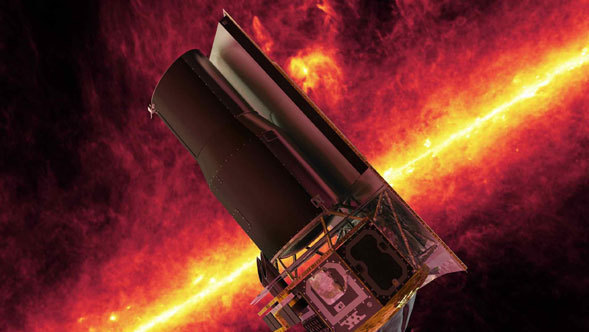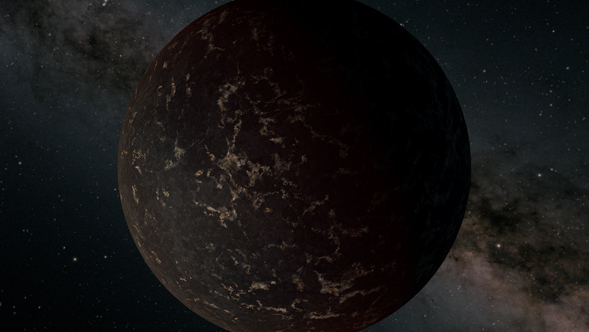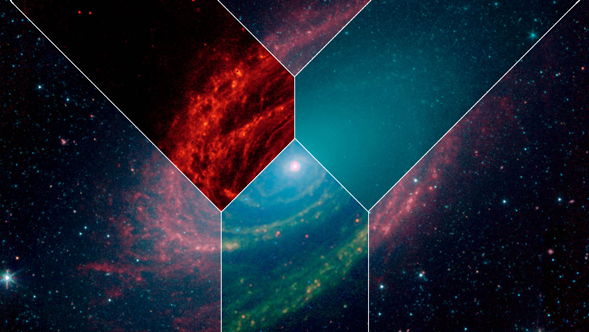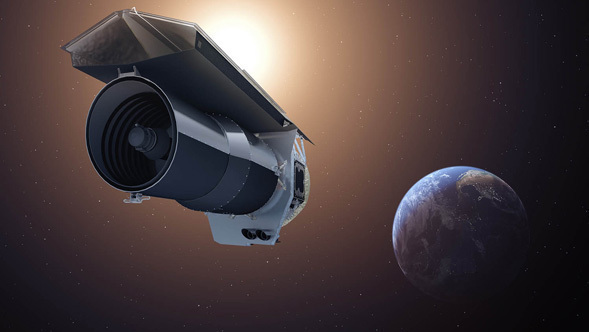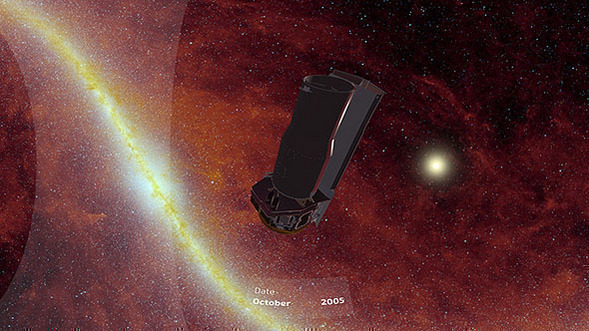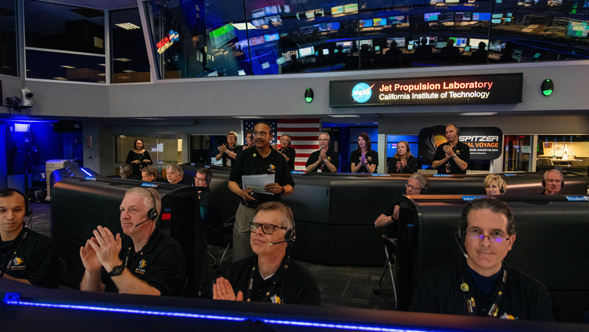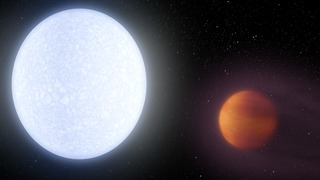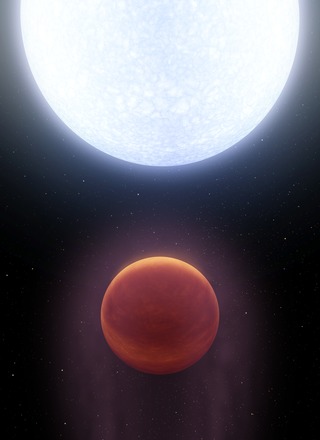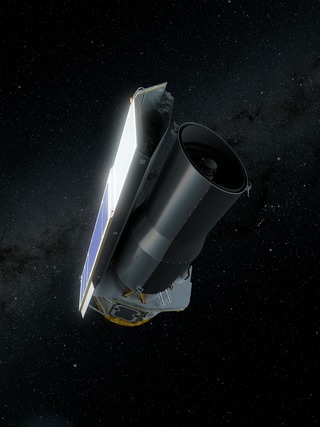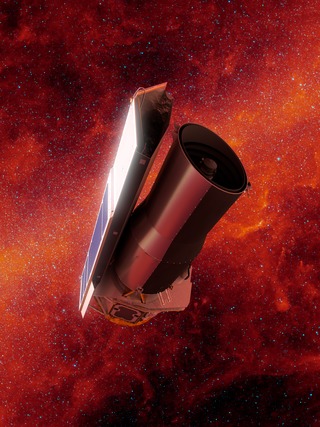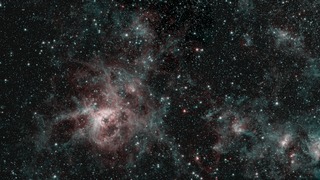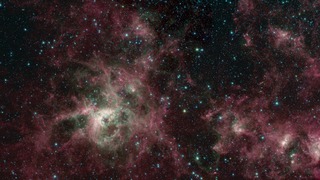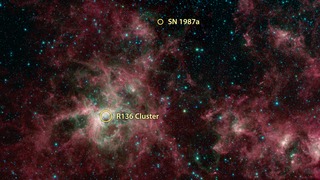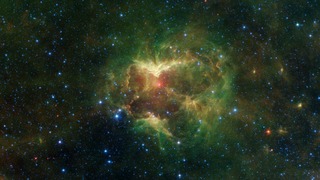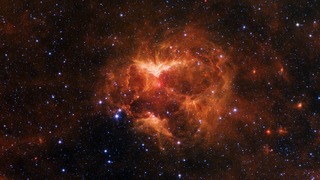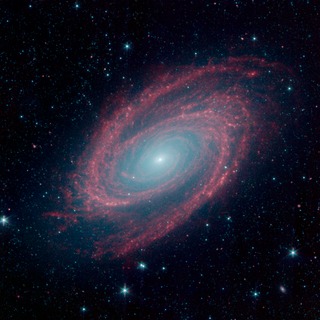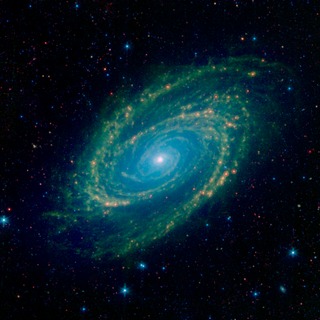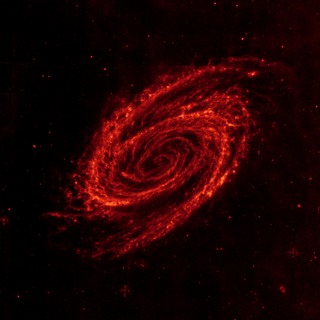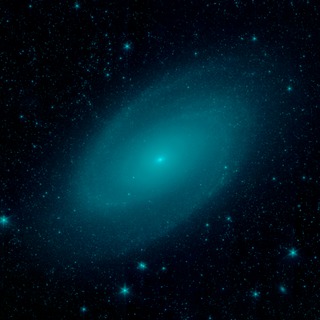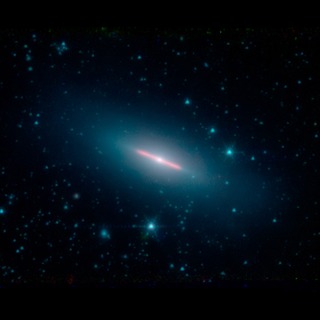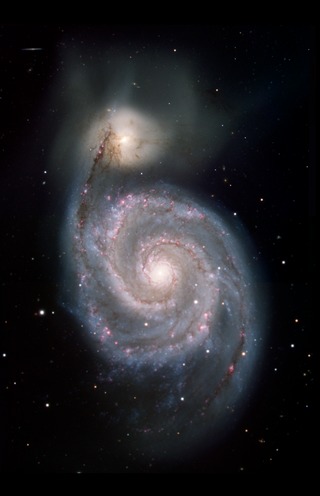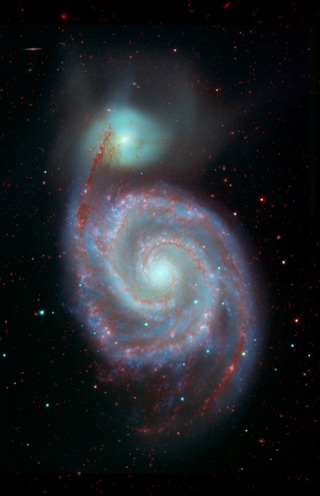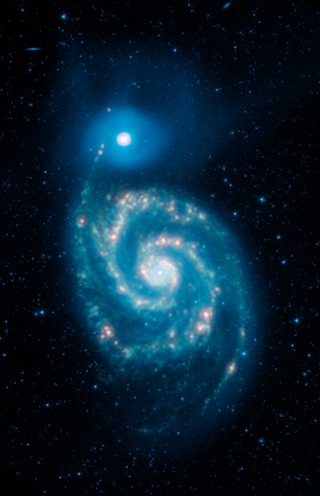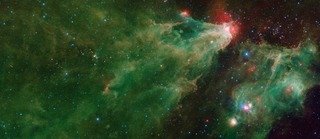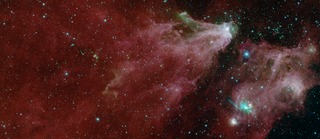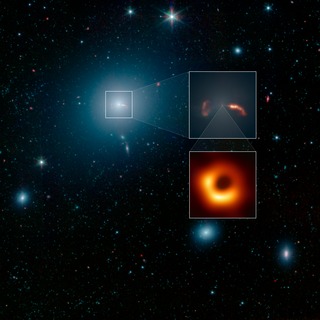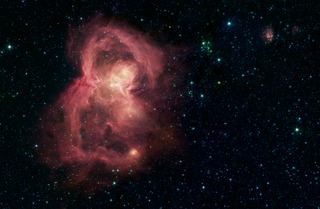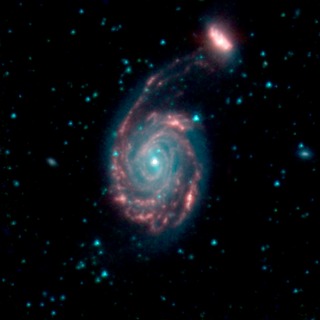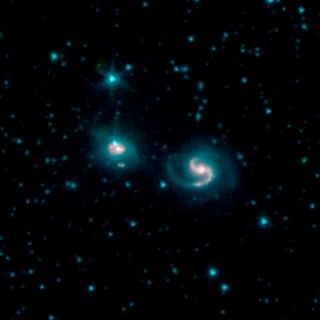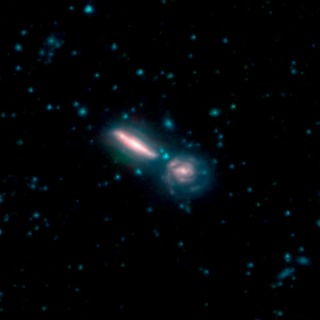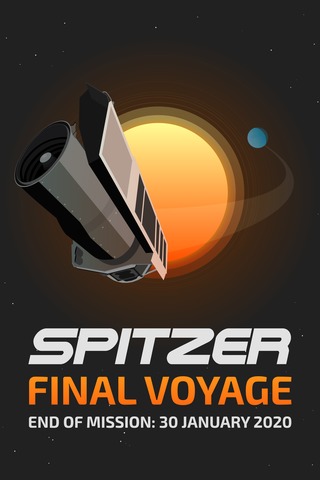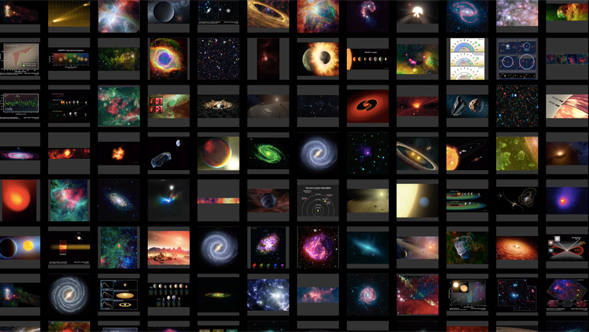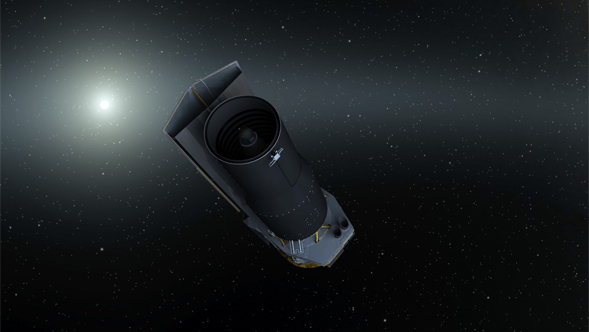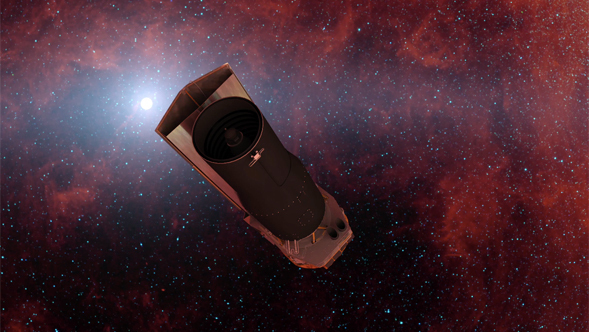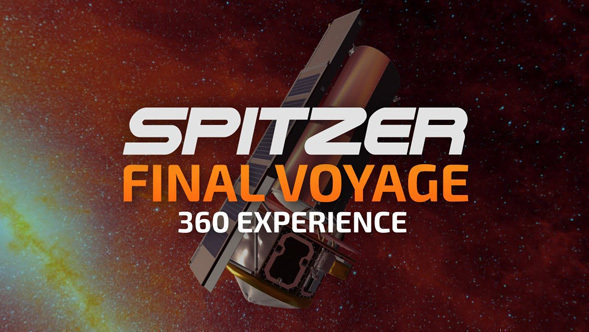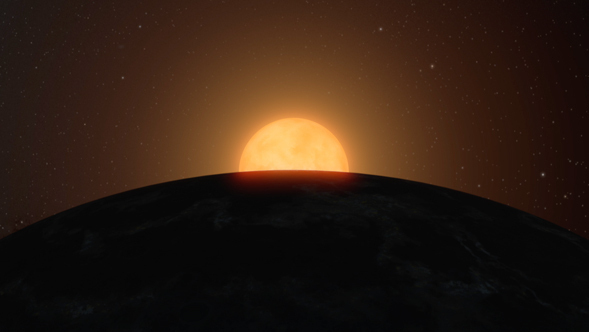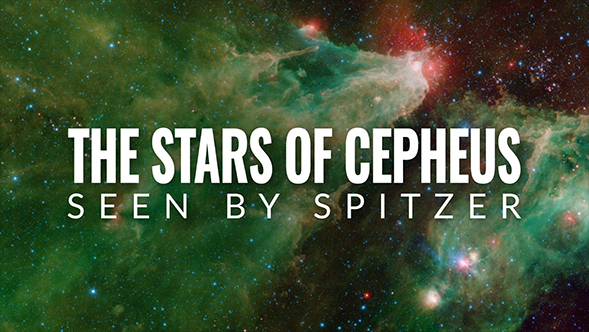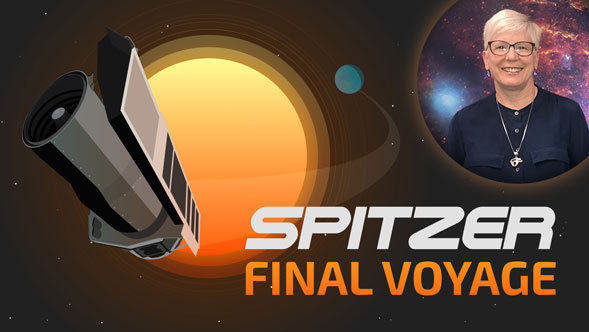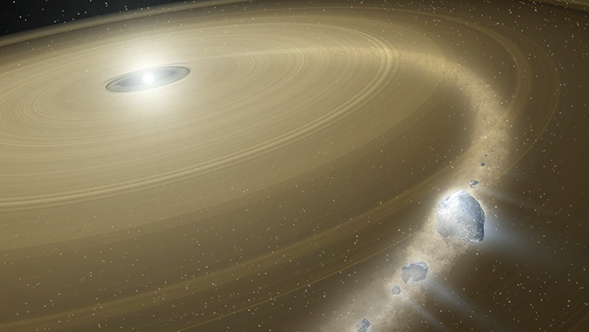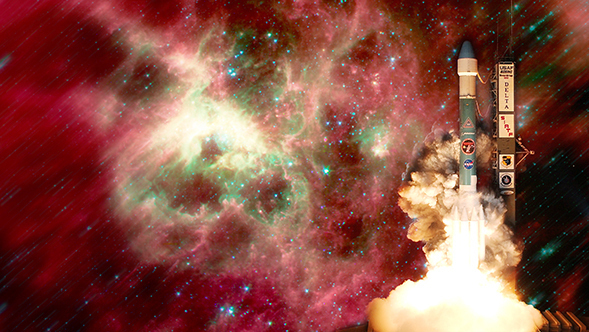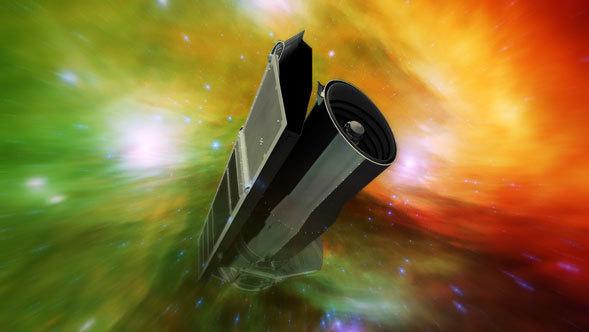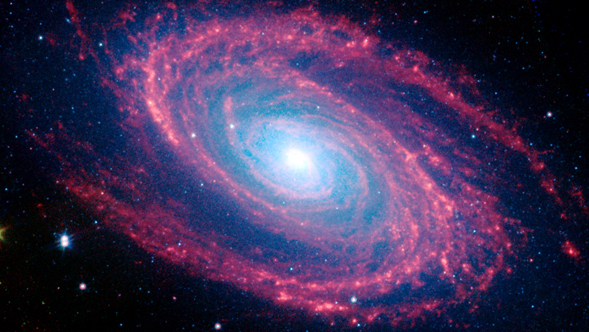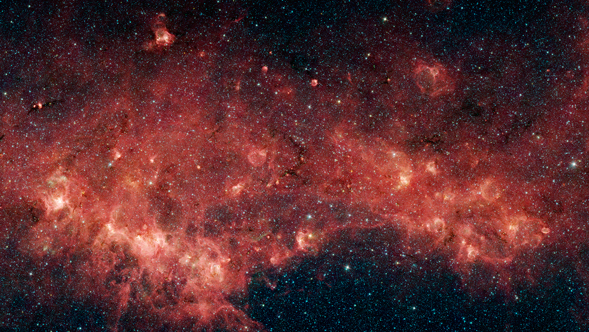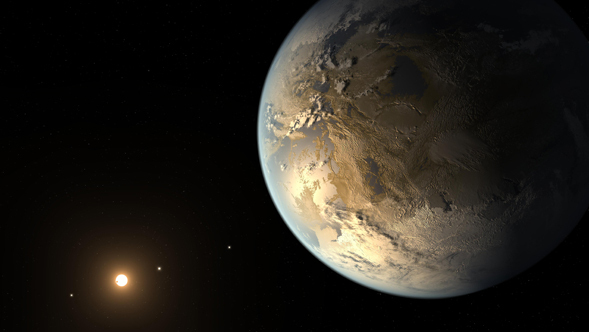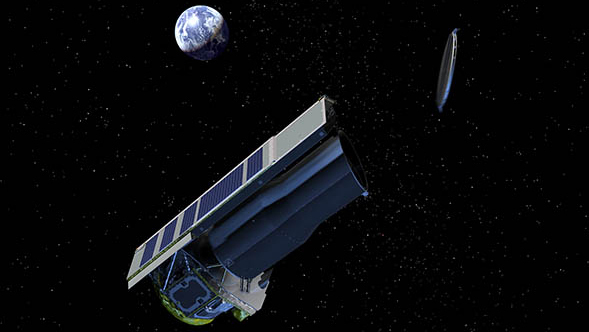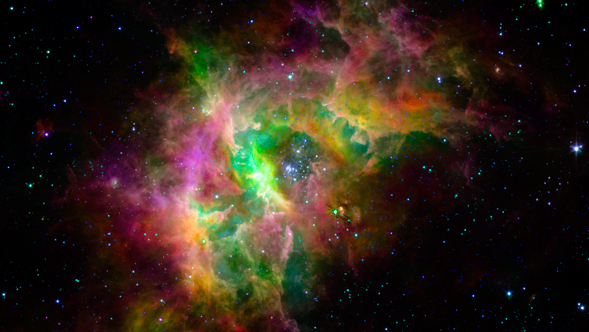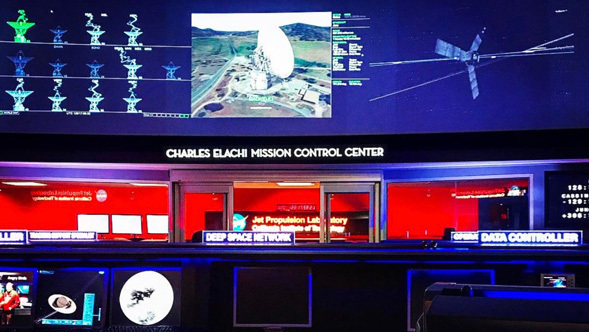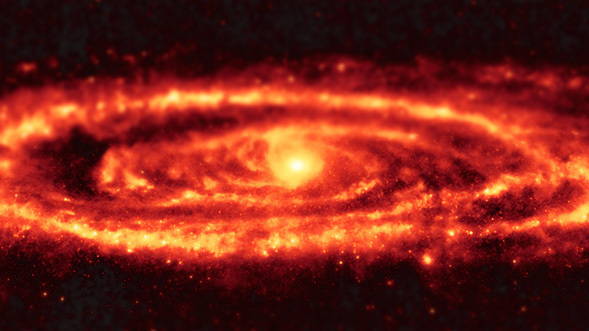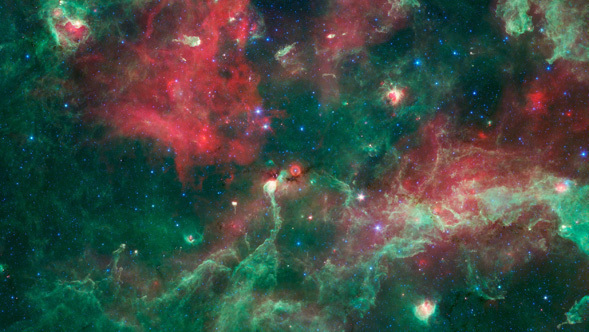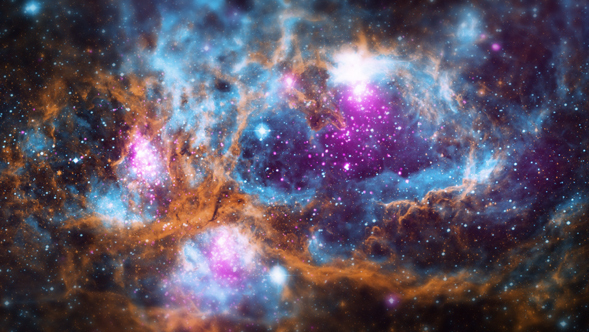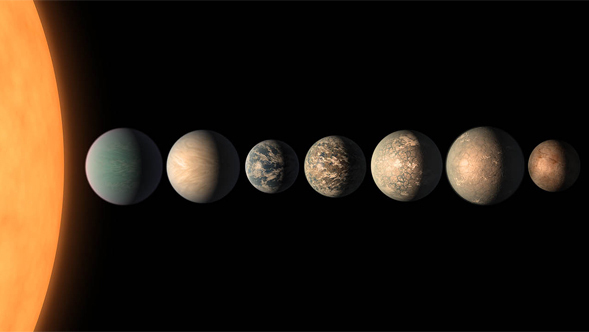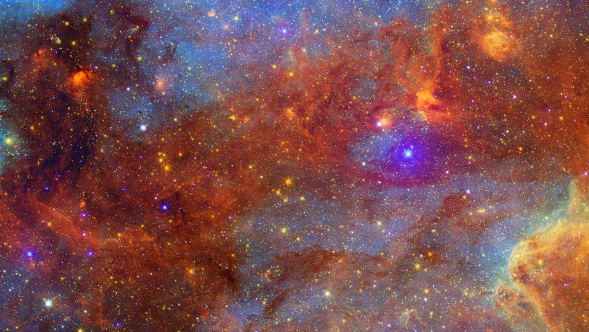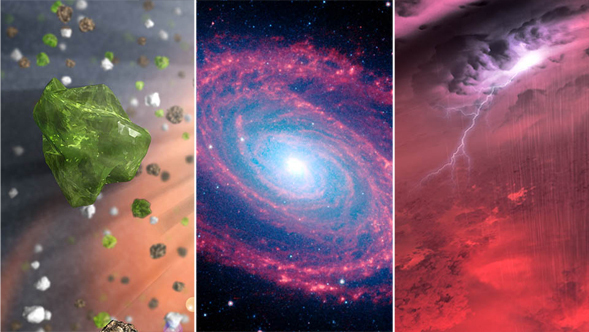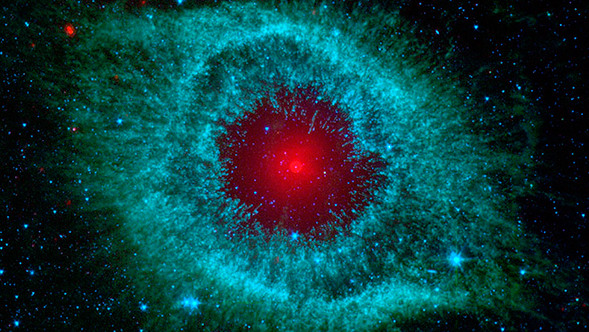On January 30th 2020, NASA's Spitzer Space Telescope completed its mission. This page tells its story, showcases new science and highlights its most outstanding achievements during the past 16 years in space.
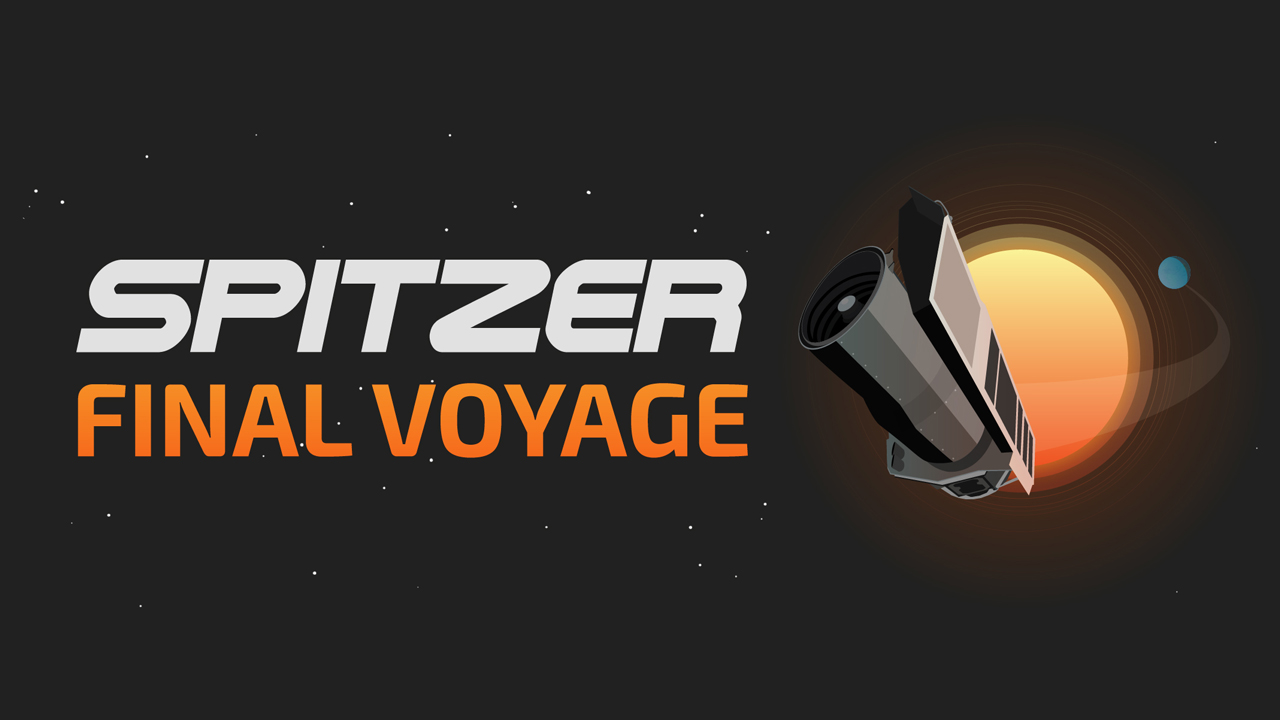
On January 30th 2020, NASA's Spitzer Space Telescope completed its mission. This page tells its story, showcases new science and highlights its most outstanding achievements during the past 16 years in space.
Follow the hashtag #spitzerfinalvoyage on Facebook and Twitter for updates.
Days Since Launch
-
6,276
Time remaining in Spitzer’s Final Voyage
-
0d 0h 0m 0s
After nearly 16 years of exploring the cosmos in infrared light, NASA's Spitzer Space Telescope will be switched off permanently on Jan. 30, 2020. By then, the spacecraft will have operated for more than 11 years beyond its prime mission, thanks to the Spitzer engineering team's ability to address unique challenges as the telescope slips farther and farther from Earth.
A new study using data from NASA's Spitzer Space Telescope provides a rare glimpse of conditions on the surface of a rocky planet orbiting a star beyond the Sun.
NASA launched its Spitzer Space Telescope into orbit around the Sun on Aug. 25, 2003. Since then, the observatory has been lifting the veil on the wonders of the cosmos, from our own solar system to faraway galaxies, using infrared light.
NASA will host a live program at 1 p.m. EST Wednesday, Jan. 22, to celebrate the far-reaching legacy of the agency’s Spitzer Space Telescope – a mission that, after 16 years of amazing discoveries, soon will come to an end.
A new virtual reality experience lets users get a taste of what it's like to explore the cosmos with the Spitzer Space Telescope, one of NASA's four Great Observatories.
After more than 16 years studying the universe in infrared light, revealing new wonders in our solar system, our galaxy and beyond, NASA's Spitzer Space Telescope's mission has come to an end.
This artist's concept shows planet KELT-9b orbiting its host star, KELT-9. It is the hottest gas giant planet discovered so far.
This artist's concept shows planet KELT-9b orbiting its host star, KELT-9. It is the hottest gas giant planet discovered so far.
This artist's concept depicts NASA's Spitzer Space Telescope in space much as it would appear to an observer at the end of its mission on January 30, 2020.
This artist's concept depicts NASA's Spitzer Space Telescope in space much as it would appear at the end of its mission on January 30, 2020. The backdrop depicts the sky in infrared light much as Spitzer would have seen it early in its mission.
This image from NASA's Spitzer Space Telescope shows the Tarantula Nebula in two wavelengths of infrared light, each represented by a different color.
This image from NASA's Spitzer Space Telescope shows the Tarantula Nebula in three wavelengths of infrared light, each represented by a different color.
This image shows the location of Supernova 1987A and the starburst region R136 where massive stars form at a significantly higher rate than anywhere else in the galaxy.
This carved-out cloud of gas and dust has been nicknamed the "Jack-o'-lantern Nebula" because it looks like a cosmic hollowed-out pumpkin. Powerful outflows of radiation and particles from a massive star known as an O-type star and about 15 to 20 times heavier than the Sun has likely swept the surrounding dust and gas outward, creating deep gouges in the cloud.
This carved-out cloud of gas and dust has been nicknamed the "Jack-o'-lantern Nebula" because it looks like a cosmic hollowed-out pumpkin. Powerful outflows of radiation and particles from a massive star known as an O-type star and about 15 to 20 times heavier than the Sun has likely swept the surrounding dust and gas outward, creating deep gouges in the cloud.
The magnificent spiral arms of the nearby galaxy Messier 81 are highlighted in this NASA Spitzer Space Telescope image. M81 was one of the first publicly-released datasets soon after Spitzers launch in August of 2003. On the occasion of Spitzers 16th anniversary this new image revisits this iconic object with extended observations and improved processing.
The magnificent spiral arms of the nearby galaxy Messier 81 are highlighted in this image from NASA's Spitzer Space Telescope. This Spitzer infrared image is a composite mosaic combining data from the Infrared Array Camera (IRAC) at wavelengths of 3.6/4.5 microns (blue/cyan) and 8 microns (green) with data from the Multiband Imaging Photometer (MIPS) at 24 microns (red).
Wispy patterns of dust trace the spiral arms of the nearby galaxy Messier 81 in this image from NASA's Spitzer Space Telescope. The infrared view of M81 at a wavelength of 8 microns (red) has been specially processed in this image to remove most of the glow of starlight to isolate the glow of dust.
The nearby spiral galaxy, Messier 81 (M81) is shown in this image from NASA's Spitzer Space Telescope. This image shows us M81 at infrared wavelengths of light at 3.6 & 4.5 microns (blue & green). At these shorter wavelengths of infrared light we are seeing the light from the stars in this galaxy, unobscured by dust that blocks our view in the visible spectrum.
Galaxy NGC 5866 lies 44 million light-years from Earth and has a diameter of roughly 60,000 light-years a little more than half the diameter of our own Milky Way galaxy. From our viewpoint, NGC 5866 is oriented almost exactly edge-on, yielding most of its structural features invisible.
This image shows the Whirlpool galaxy, also known as Messier 51 and NGC 5194/5195, which is actually a pair of galaxies. Located approximately 23 million light-years away, it resides in the constellation Canes Venatici. This image presents the galaxy's appearance in visible light, from the Kitt Peak National Observatory 2.1-meter (6.8-foot) telescope and shows light at 0.4 microns (blue) and 0.7 microns (green).
This image shows the Whirlpool galaxy, also known as Messier 51 and NGC 5194/5195, which is actually a pair of galaxies. Located approximately 23 million light-years away, it resides in the constellation Canes Venatici. This image combines two visible light wavelengths (in blue and green) and infrared light (in red) seen by NASA's Spitzer Space Telescope.
This image shows the Whirlpool galaxy, also known as Messier 51 and NGC 5194/5195, which is actually a pair of galaxies. Located approximately 23 million light-years away, it resides in the constellation Canes Venatici. Here we see three wavelengths of infrared light: 3.6 microns (shown in blue), 4.5 microns (green) and 8 microns (red), as observed by NASA's Spitzer Space Telescope.
This image shows the Whirlpool galaxy, also known as Messier 51 and NGC 5194/5195, which is actually a pair of galaxies. Located approximately 23 million light-years away, it resides in the constellation Canes Venatici. Here we see four wavelengths of infrared light: 3.6 microns (shown in blue), 4.5 microns (cyan), 8 microns (green), and 24 microns (red) as observed by NASA's Spitzer Space Telescope.
This image was compiled using data from NASA's Spitzer Space Telescope using the Infrared Array Camera (IRAC) and the Multiband Imaging Photometer (MIPS) during Spitzer's "cold" mission, before the spacecraft's liquid helium coolant ran out in 2009.
This image shows data from NASA's Spitzer Space Telescope, from the IRAC instrument, with colors corresponding to wavelengths of 3.6, 4.5, 5.8 and 8.0 m.
This wide-field image of the galaxy M87 was taken by NASA's Spitzer Space Telescope. The top inset shows a close-up of two shockwaves, created by a jet emanating from the galaxy's supermassive black hole. The Event Horizon Telescope recently took a close-up image of the silhouette of that black hole, show in the second inset.
What looks like a red butterfly in space is in reality a nursery for hundreds of baby stars, revealed in this infrared image from NASA's Spitzer Space Telescope. Officially named W40, the butterfly is a nebula - a giant cloud of gas and dust in space where new stars may form.
This image shows the merger of two galaxies, known as NGC 7752 (larger) and NGC 7753 (smaller), also collectively called Arp86. In these images, different colors correspond to different wavelengths of infrared light. Blue and green are wavelengths both strongly emitted by stars. Red is a wavelength mostly emitted by dust.
This image shows the merger of two galaxies, known as NGC 6786 (right) and UGC 11415 (left), also collectively called VII Zw 96. It is composed of images from three Spitzer Infrared Array Camera (IRAC) channels: IRAC channel 1 in blue, IRAC channel 2 in green and IRAC channel 3 in red.
This image shows two merging galaxies known as Arp 302, also called VV 340. In these images, different colors correspond to different wavelengths of infrared light. Blue and green are wavelengths both strongly emitted by stars. Red is a wavelength mostly emitted by dust.
A poster celebrating Spitzer Final Voyage. On January 30th 2020, NASA's Spitzer Space Telescope will complete its mission. The Spitzer Final Voyage web page will tell its story, showcase new science and highlight its most outstanding achievements during the past 16 years in space.
636 images, graphs, and illustrations have been compiled into this loop-able animation showing off over 16 years of science from NASA's Spitzer Space Telescope.
This animation depicts NASA's Spitzer Space Telescope as it might appear in space if viewed in infrared light. The background image is derived from Spitzer's observations of our Milky Way.
Fly around NASA's Spitzer Space Telescope! This loop-able animation depicts the telescope against the night sky as it appears in visible light.
Fly around NASA's Spitzer Space Telescope! This loop-able animation depicts the telescope against the night sky as it appears in infrared light.
Experience an immersive universe of infrared light as you follow the mission of NASA's Spitzer Space Telescope in VR. Spitzer is the 4th and final of NASA's Great Observatories, and will be concluding its mission on January 30th 2020.
This artist's animation depicts the exoplanet LHS 3844b, which is 1.3 times the mass of Earth and orbits an M dwarf star. The planet's surface may be covered mostly in dark lava rock, with no apparent atmosphere, according to observations by NASA's Spitzer Space Telescope.
Soar through this cosmic landscape filled with bright nebulas, as well as runaway, massive and young stars. The image comes from NASA's Spitzer Space Telescope, which sees the universe in infrared light.
On January 30, 2020, NASA’s Spitzer Space Telescope will transmit the final science and engineering data to mission control and then be commanded off, ending its amazing and surprising mission. But even after Spitzer ceases transmissions, scientists will continue making discoveries from its 16 years of data for decades to come.
As a graduate student at the turn of the millennium, I will never forget a particular moment that caused my whole being to yell 'Stop the press!'. It changed the course of my career and led to a long-term love affair with NASA’s Spitzer Space Telescope.
As Spitzer is on its "Final Voyage", training its infrared eye on the sky for the final nine months of its mission, I am a bit sad, but at the same time proud and upbeat that I have been connected to this mission for most of my career in astronomy. And besides my career, Spitzer also played a role in my personal life... So, one could say that, for the last two decades, Spitzer has been meshed into the fabric of my life.
We often think about Spitzer as being a 16-year-old. That is the time it has been operating after its launch on a Delta II Heavy rocket from Cape Canaveral. But, it is much older than that...
I have no direct proof that Spitzer exists. I joined Spitzer relatively late, in 2007, four years after launch. I have never seen the spacecraft in a clean room, I did not know what my future held when one August day a rocket sent Spitzer into the sky between my junior and senior years of college, so I paid no attention to what seemed to be just another launch.
My Spitzer story starts in 1999 when I was working on my PhD at the Space Telescope Science Institute in Baltimore. I received a letter from the Infrared Spectrograph (IRS) team at Cornell University encouraging me to apply for one of their position openings. They had seen my vitae at one of the AAS meetings earlier the same year.
This year we celebrate the 15-year legacy of NASA’s Spitzer Space Telescope. I was happy to be asked to write about the role of Spitzer in my career. Indeed, I am one of the many scientists whose career has been shaped by Spitzer and the fantastic data it provided us with during its long lifespan.
Thinking back on it now, so close to the end of Spitzer's mission, it would be pretty hard to understate the impact it's had on my life. Spitzer influenced me as a graduate student, as a member of the Spitzer team, and as a scientist.
I am thinking of the Spitzer Space Telescope, and about the job I got as Helpdesk Operator in 2005. That job was meant for me. I know because I found out about the website on which it was posted the same day it was posted after reaching out to an old research advisor, even though I had left the field of astronomy a billion years ago.
Spitzer was my job for seven years, and has been an important part of my research for much longer. I even met my wife through Spitzer, though that is another story.
About 16 years ago I was ecstatic to hear I got the job as a science communicator at NASA's Jet Propulsion Laboratory, with the specific task of covering the upcoming launch of the Spitzer Space Telescope. My background was not in space, but biochemistry.
The best way for me to express my time at Spitzer can be wrapped up in one word: family. Spitzer was the first project I ever worked for. From the first day, there was an ease of meeting the team members and witnessing their diligence in supporting their spacecraft. The care they had for each other was immediately apparent.
I leapt from "Superfriend" to Ph.D., then learned Science Operations in Spain, on ISO. 'Til George and SIRTF lured me back to apply the knowledge I had gained ...
In July of 1997, as Manager of the Science Data Processing Systems Section at JPL, I was having the time of my life managing the processing of the first images and data from the Mars Pathfinder mission while meeting the challenges of all the other JPL projects we were supporting.
The start of my life and career voyage via Spitzer began in 2014. After a two-year unpaid internship at JPL doing graph theory for satellite communication, I was hired by the Multi-Mission Resource Scheduling Services (MRSS) team as a Mission Operation Engineer.
I joined the Spitzer Flight Control Team four years ago. I worked as the ACE, which is the person who sends commands to the Spitzer observatory and monitors the data coming down from the spacecraft.
I joined Spitzer Science Center (SSC) in 1997 after working in NED as a software developer for eight years, though it was still called SIRTF Science Center at the time. During the 12 years at SSC, my jobs changed and increased in responsibilities, from application developer to cognizant engineer for science user tools development, to SSC uplink and archive lead.
When we meet one of our colleagues for the first time, it usually doesn’t take very long to figure out that we have friends or co-workers or projects in common. For the five of us, all professors in the Department of Physics & Astronomy at Western University in London, Canada, the Spitzer Space Telescope is our common link.
About six years ago, I was fortunate to have been given a chance to join the Spitzer Operations team. I had two jobs on Spitzer: sequencing and flight control.
